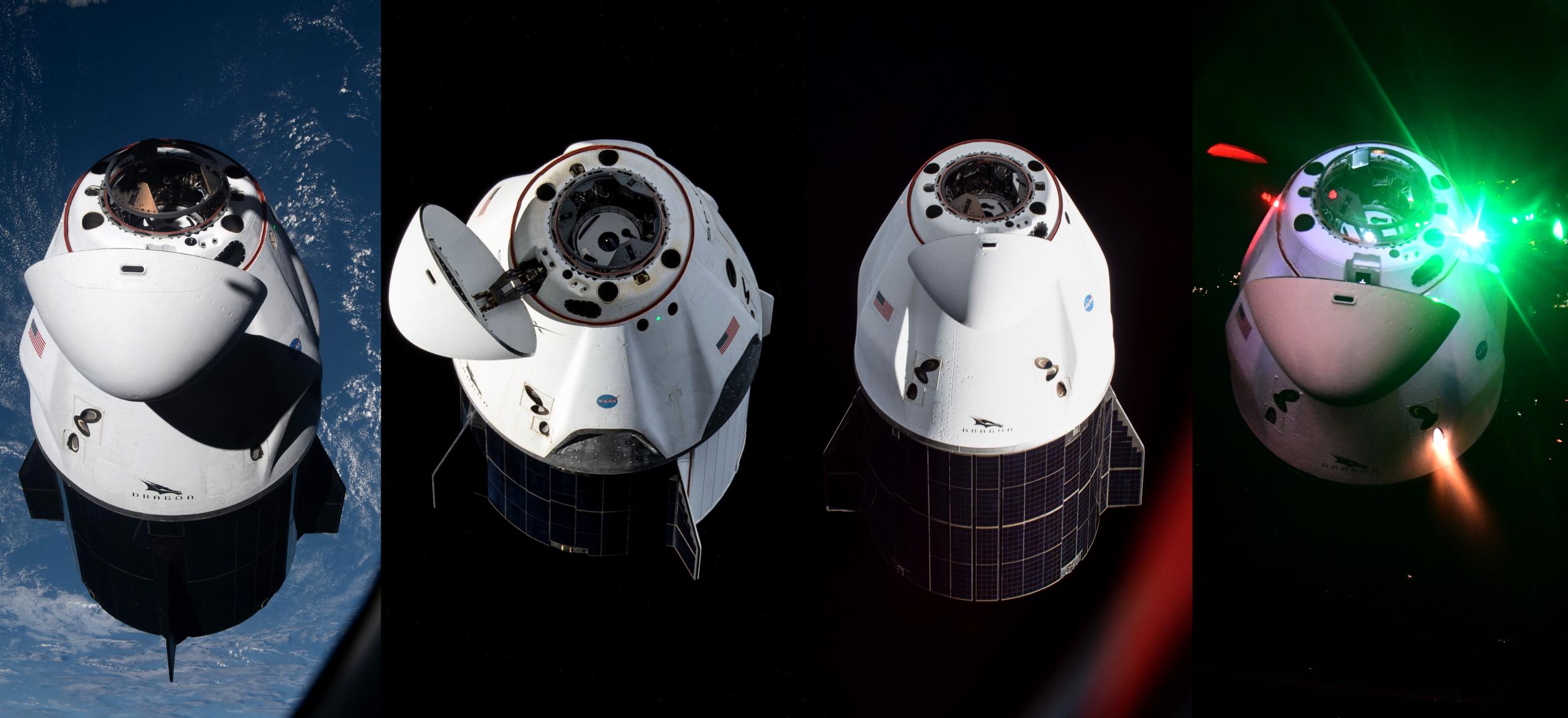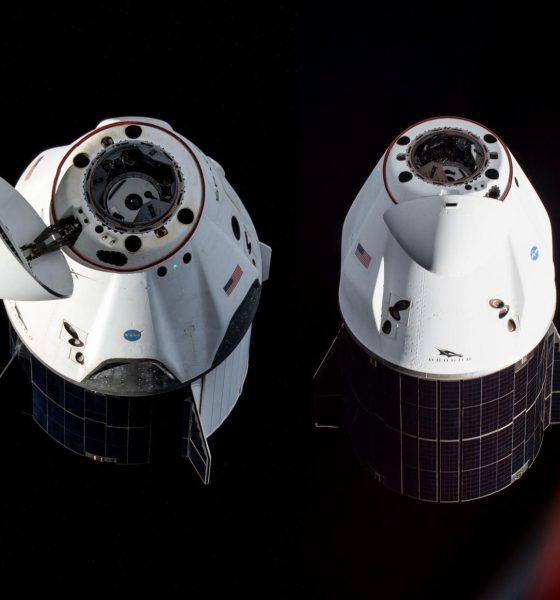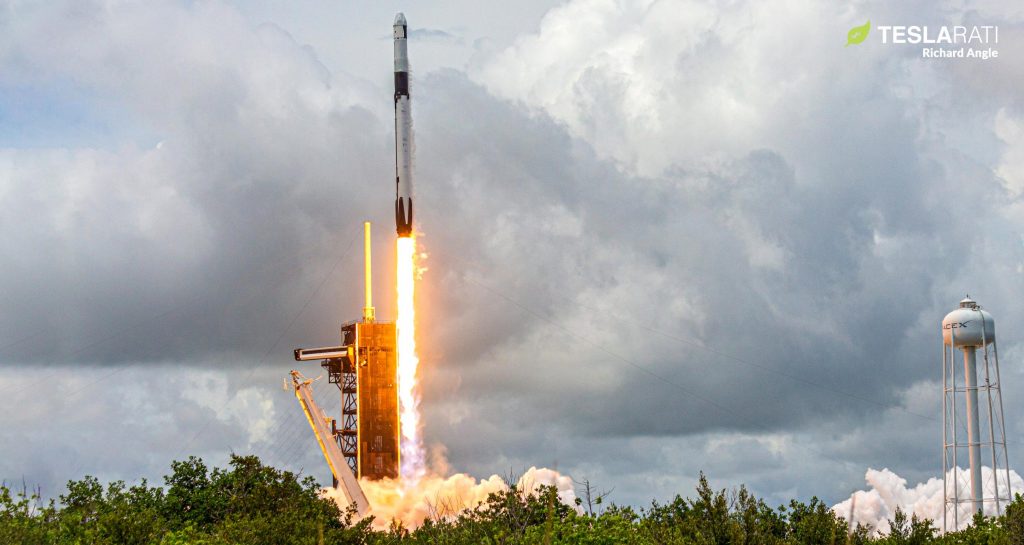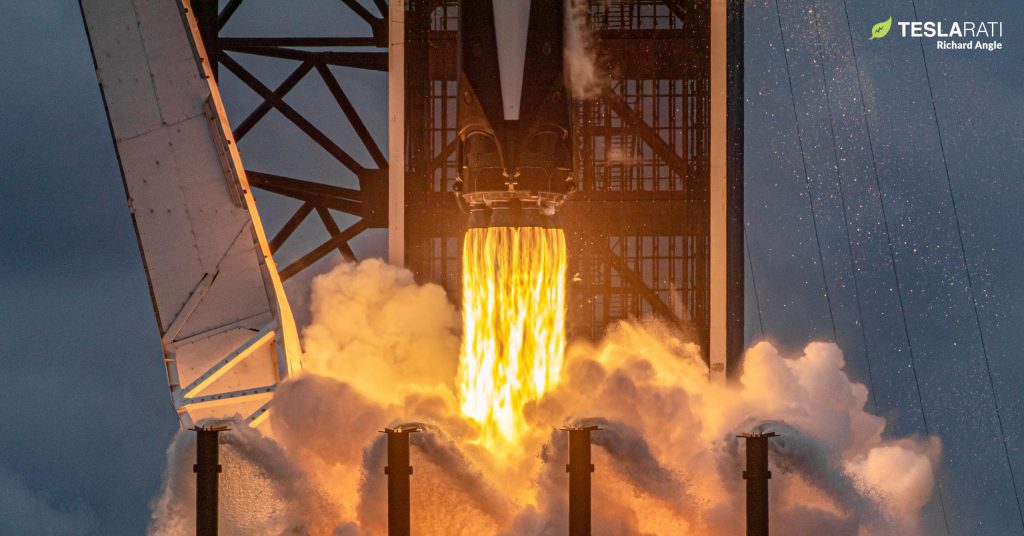

News
SpaceX to nearly double fleet of reusable Dragon spacecraft by end of 2022
Comments from NASA and SpaceX officials during a briefing ahead of Crew Dragon’s third operational astronaut launch have offered a more detailed picture of the fleet of reusable Dragon spacecraft the company plans to build and cycle to support NASA missions.
As part of the briefing, SpaceX Director of Dragon Mission Management Sarah Walker revealed that NASA’s imminent Crew-3 mission will debut a new Crew Dragon capsule (likely C210), which will be carried into space on top of once-flown Falcon 9 booster B1067. B1067 debuted on June 3rd, 2021, sending SpaceX’s second upgraded Cargo Dragon spacecraft on its way to the International Space Station (ISS) before returning to Earth and sticking a landing on drone ship Of Course I Still Love You. While far from breaking SpaceX’s own turnaround records, B1067’s Crew-3 launch will be the second time NASA has flown astronauts on a flight-proven commercial rocket.
SpaceX flew NASA astronauts on a flight-proven booster (Falcon 9 B1062) for the first time in April 2021 as part of Crew-2 – Dragon’s second operational crew launch and first crew ‘rotation.’ Crew-2’s Crew Dragon was also flight-proven, having supported SpaceX’s inaugural Demo-2 astronaut launch in mid-2020 – perhaps an even more impressive feat.
Five months later, SpaceX launched the world’s first all-private group of astronauts as part of a primarily philanthropic mission known as Inspiration4. Once again, a flight-proven booster launched an orbit-proven Crew Dragon capsule carrying four astronauts, pushing human-rated reusability even further with the first use of a twice-flown Falcon 9 on a crewed mission.
Crew-3 will thus continue the brand new trend of launching professional NASA and international astronauts on flight-proven SpaceX rockets. Scheduled to lift off no earlier than 2:43 am EDT (06:43 UTC) on Saturday, October 30th, a successful launch will mean that SpaceX has launched more crewed Dragons on flight-proven Falcon 9s than on new boosters – and despite the fact that the company completed its first astronaut launch ever less than a year and a half ago.


While Crew-3 won’t be the third crewed launch of a flight-proven Dragon, it will still play the important role of debuting a new vehicle as SpaceX works to assemble a fleet of reusable, orbital spacecraft. The spacecraft – likely Dragon 2 Capsule #10 (C210) – will be the third Crew Dragon to join SpaceX’s fleet of two operational crew capsules, which currently includes C206 (Endeavor) and C207 (Resilience). SpaceX’s Walker further confirmed that Crew-4 – recently scheduled to launch NET April 2022 – will also debut a new Crew Dragon capsule, growing the company’s crew capsule fleet to four vehicles by mid-2022.
Each certified to fly at least five NASA missions apiece, those four spacecraft should be enough to sate at least a few years of SpaceX’s near-term Crew Dragon launch demand. If an extended certification beyond five flights is impossible or if the company continues to fly public and private astronauts on Dragon well into the mid to late 2020s, however, it’s possible that several more capsules will be needed. But in theory, if Boeing’s Starliner finally reaches operational readiness in 2023 and NASA continues to operate the ISS to 2030 and beyond, SpaceX will only be tasked with supporting one NASA Crew Dragon launch annually by 2023.




On the uncrewed side of things, Walker also revealed that SpaceX will debut at least one more new Cargo Dragon 2 spacecraft in 2022, raising the company’s uncrewed Dragon fleet to four capsules strong. As long as the ISS remains operational, SpaceX will likely continue to deliver cargo biannually, requiring around 12-18 more Cargo Dragon launches between now and 2030. It’s possible that Starship will quickly replace Dragon as soon as it’s operational and NASA-certified for routine crew and cargo missions, but that milestone is several years away at best, likely ensuring that Dragon will continue to operate for at least the next 5-10 years.
In the meantime, SpaceX’s fleet of reusable Dragon spacecraft looks set to almost double from four to seven capsules by Q4 2022.

Elon Musk
Elon Musk’s X will start using a Tesla-like software update strategy
The initiative seems designed to accelerate updates to the social media platform, while maintaining maximum transparency.

Elon Musk’s social media platform X will adopt a Tesla-esque approach to software updates for its algorithm.
The initiative seems designed to accelerate updates to the social media platform, while maintaining maximum transparency.
X’s updates to its updates
As per Musk in a post on X, the social media company will be making a new algorithm to determine what organic and advertising posts are recommended to users. These updates would then be repeated every four weeks.
“We will make the new 𝕏 algorithm, including all code used to determine what organic and advertising posts are recommended to users, open source in 7 days. This will be repeated every 4 weeks, with comprehensive developer notes, to help you understand what changed,” Musk wrote in his post.
The initiative somewhat mirrors Tesla’s over-the-air update model, where vehicle software is regularly refined and pushed to users with detailed release notes. This should allow users to better understand the details of X’s every update and foster a healthy feedback loop for the social media platform.
xAI and X
X, formerly Twitter, has been acquired by Elon Musk’s artificial intelligence startup, xAI last year. Since then, xAI has seen a rapid rise in valuation. Following the company’s the company’s upsized $20 billion Series E funding round, estimates now suggest that xAI is worth tens about $230 to $235 billion. That’s several times larger than Tesla when Elon Musk received his controversial 2018 CEO Performance Award.
As per xAI, the Series E funding round attracted a diverse group of investors, including Valor Equity Partners, Stepstone Group, Fidelity Management & Research Company, Qatar Investment Authority, MGX, and Baron Capital Group, among others. Strategic partners NVIDIA and Cisco Investments also continued support for building the world’s largest GPU clusters.
News
Tesla FSD Supervised wins MotorTrend’s Best Driver Assistance Award
The decision marks a notable reversal for the publication from prior years, with judges citing major real-world improvements that pushed Tesla’s latest FSD software ahead of every competing ADAS system.

Tesla’s Full Self-Driving (Supervised) system has been named the best driver-assistance technology on the market, earning top honors at the 2026 MotorTrend Best Tech Awards.
The decision marks a notable reversal for the publication from prior years, with judges citing major real-world improvements that pushed Tesla’s latest FSD software ahead of every competing ADAS system. And it wasn’t even close.
MotorTrend reverses course
MotorTrend awarded Tesla FSD (Supervised) its 2026 Best Tech Driver Assistance title after extensive testing of the latest v14 software. The publication acknowledged that it had previously criticized earlier versions of FSD for erratic behavior and near-miss incidents, ultimately favoring rivals such as GM’s Super Cruise in earlier evaluations.
According to MotorTrend, the newest iteration of FSD resolved many of those shortcomings. Testers said v14 showed far smoother behavior in complex urban scenarios, including unprotected left turns, traffic circles, emergency vehicles, and dense city streets. While the system still requires constant driver supervision, judges concluded that no other advanced driver-assistance system currently matches its breadth of capability.
Unlike rival systems that rely on combinations of cameras, radar, lidar, and mapped highways, Tesla’s FSD operates using a camera-only approach and is capable of driving on city streets, rural roads, and freeways. MotorTrend stated that pure utility, the ability to handle nearly all road types, ultimately separated FSD from competitors like Ford BlueCruise, GM Super Cruise, and BMW’s Highway Assistant.
High cost and high capability
MotorTrend also addressed FSD’s pricing, which remains significantly higher than rival systems. Tesla currently charges $8,000 for a one-time purchase or $99 per month for a subscription, compared with far lower upfront and subscription costs from other automakers. The publication noted that the premium is justified given FSD’s unmatched scope and continuous software evolution.
Safety remained a central focus of the evaluation. While testers reported collision-free operation over thousands of miles, they noted ongoing concerns around FSD’s configurable driving modes, including options that allow aggressive driving and speeds beyond posted limits. MotorTrend emphasized that, like all Level 2 systems, FSD still depends on a fully attentive human driver at all times.
Despite those caveats, the publication concluded that Tesla’s rapid software progress fundamentally reshaped the competitive landscape. For drivers seeking the most capable hands-on driver-assistance system available today, MotorTrend concluded Tesla FSD (Supervised) now stands alone at the top.
News
Elon Musk’s Grokipedia surges to 5.6M articles, almost 79% of English Wikipedia
The explosive growth marks a major milestone for the AI-powered online encyclopedia, which was launched by Elon Musk’s xAI just months ago.

Elon Musk’s Grokipedia has grown to an impressive 5,615,201 articles as of today, closing in on 79% of the English Wikipedia’s current total of 7,119,376 articles.
The explosive growth marks a major milestone for the AI-powered online encyclopedia, which was launched by Elon Musk’s xAI just months ago. Needless to say, it would only be a matter of time before Grokipedia exceeds English Wikipedia in sheer volume.
Grokipedia’s rapid growth
xAI’s vision for Grokipedia emphasizes neutrality, while Grok’s reasoning capabilities allow for fast drafting and fact-checking. When Elon Musk announced the initiative in late September 2025, he noted that Grokipedia would be an improvement to Wikipedia because it would be designed to avoid bias.
At the time, Musk noted that Grokipedia “is a necessary step towards the xAI goal of understanding the Universe.”
Grokipedia was launched in late October, and while xAI was careful to list it only as Version 0.1 at the time, the online encyclopedia immediately earned praise. Wikipedia co-founder Larry Sanger highlighted the project’s innovative approach, noting how it leverages AI to fill knowledge gaps and enable rapid updates. Netizens also observed how Grokipedia tends to present articles in a more objective manner compared to Wikipedia, which is edited by humans.
Elon Musk’s ambitious plans
With 5,615,201 total articles, Grokipedia has now grown to almost 79% of English Wikipedia’s article base. This is incredibly quick, though Grokipedia remains text-only for now. xAI, for its part, has now updated the online encyclopedia’s iteration to v0.2.
Elon Musk has shared bold ideas for Grokipedia, including sending a record of the entire knowledge base to space as part of xAI’s mission to preserve and expand human understanding. At some point, Musk stated that Grokipedia will be renamed to Encyclopedia Galactica, and it will be sent to the cosmos.
“When Grokipedia is good enough (long way to go), we will change the name to Encyclopedia Galactica. It will be an open source distillation of all knowledge, including audio, images and video. Join xAI to help build the sci-fi version of the Library of Alexandria!” Musk wrote, adding in a later post that “Copies will be etched in stone and sent to the Moon, Mars and beyond. This time, it will not be lost.”








